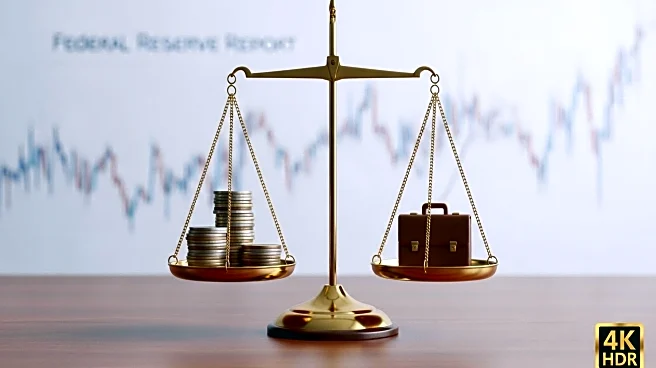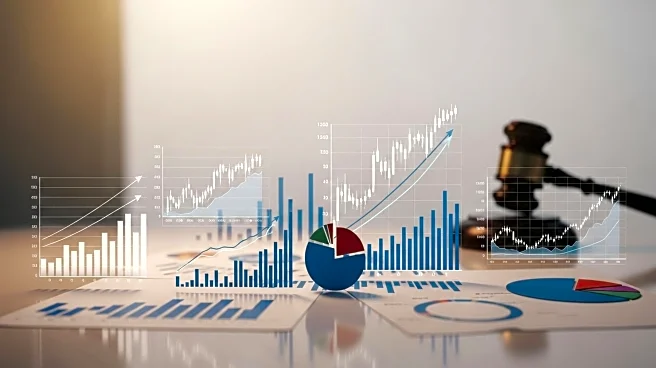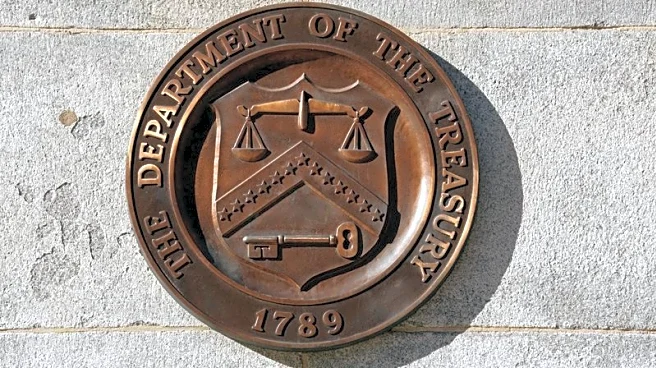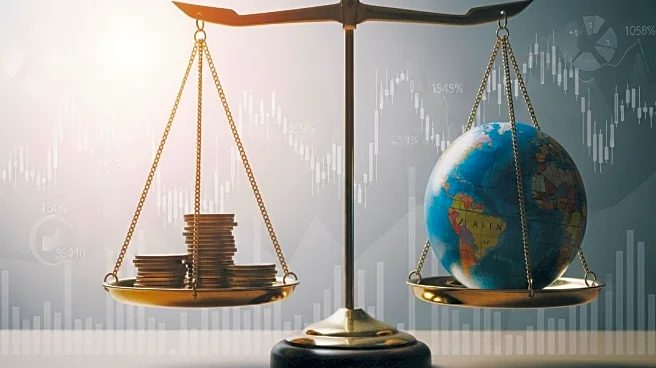What's Happening?
The U.S. economy's resilience in managing fiscal and monetary challenges since 2020 has resulted in asymmetric investment outcomes. Policymakers have focused on short-term stability through expansive fiscal measures and adaptive monetary policy, leading to sectoral divergence. The fiscal landscape in 2025, marked by a $1.9 trillion deficit, highlights the tension between growth and sustainability. High tariffs and tax policy extensions have benefited sectors like energy and defense, while imposing costs on others like clothing and textiles. The Federal Reserve's policy shifts have further amplified sectoral divides, affecting investor sentiment and market psychology.
Why It's Important?
The U.S. economy's resilience has created winners and losers across sectors, reflecting the strengths and vulnerabilities of a complex economy. Fiscal and monetary policies have stimulated growth in some areas while stifling it in others. High tariffs have generated significant revenue but also led to dynamic losses due to reduced trade efficiency. The Federal Reserve's rate adjustments have influenced investor behavior, with capital flowing into high-growth sectors like technology and AI. This landscape requires investors to navigate nuanced assessments of policy direction and sectoral exposure, highlighting the importance of agility in risk allocation.
What's Next?
The asymmetric outcomes of macroeconomic resilience are likely to persist, rewarding agile investors while penalizing rigidity. As the Federal Reserve considers further rate cuts and fiscal policymakers debate tax reforms, sectoral imbalances may continue to shape investment strategies. Investors must remain vigilant in assessing policy impacts and sectoral dynamics to optimize risk allocation. The ongoing interplay between fiscal and monetary policies will continue to influence market psychology and sectoral performance.
Beyond the Headlines
The U.S. economy's resilience has entrenched sectoral imbalances and heightened dependency on policy-driven growth. This has created a fragile equilibrium, where fiscal and monetary interventions have averted immediate crises but also amplified sectoral divergence. The energy sector exemplifies this, with clean-energy technologies facing declining tax credits while fossil fuels benefit from reduced regulatory burdens. These contrasts underscore the complex interplay between policy direction and sectoral exposure, highlighting the need for nuanced investment strategies.












